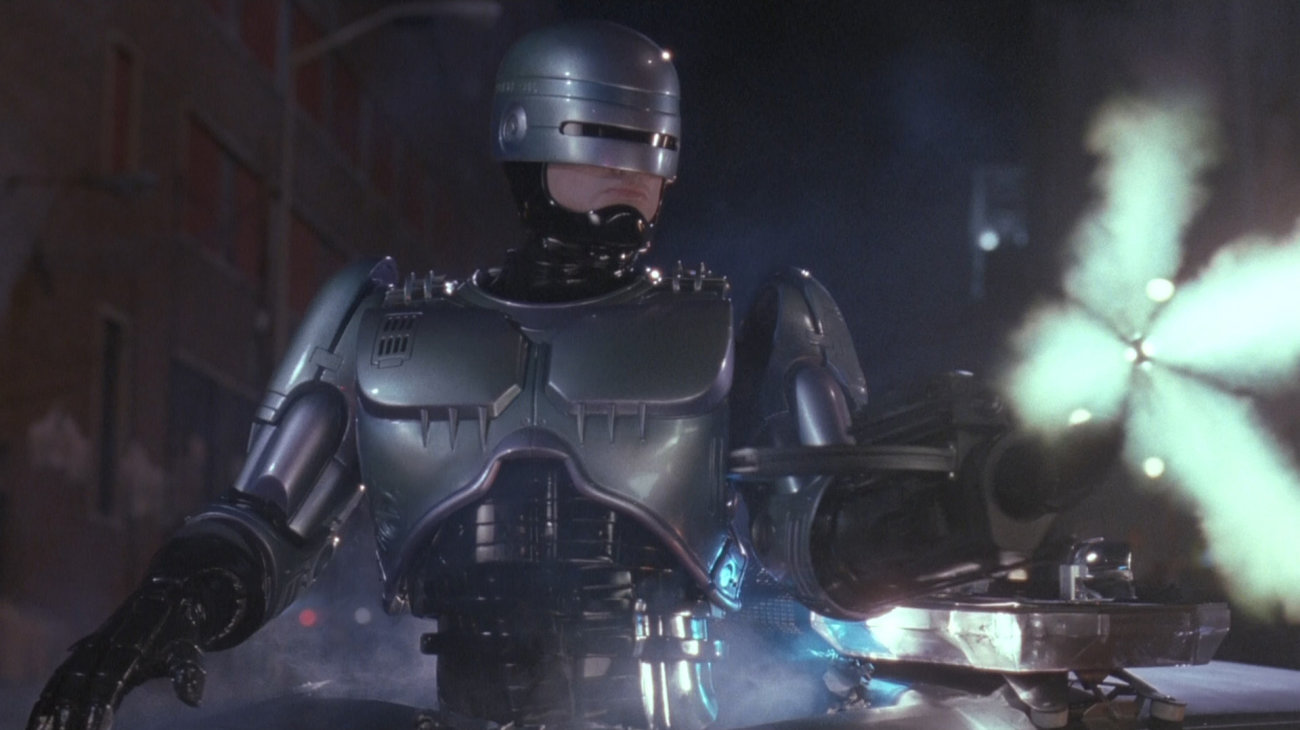Film Review: RoboCop 3 (1993)

By no stretch of the imagination could RoboCop 3 be considered “good,” but there is something interesting about it. Once again, the streets of Detroit are ruled by murderous gangs of whacked-out punks and other assorted criminals. And once again an evil corporation is hellbent on exploiting the city for profit and power. If that sounds familiar, it’s perhaps because you’ve seen one or both original installments in the RoboCop franchise. Rehashed backdrop aside, what mostly makes 3 amusing is how well the now decades old premise resonates with today’s political climate. Corruption and greed have been staples of movie villains for a hundred years or more, but family separation and detainment haven’t. In this regard, RoboCop 3 is eerily predictive.
RoboCop 3 doesn’t contain nearly the level of convincing menace the original does. Compared to Paul Verhoeven’s 1987 dystopian nightmare, 3 is a walk in the park. The bad guys are goofy rather than sinister – with Rip Torn in place of 80’s staple Ronny Cox, and a Japanese samurai android named Otomo (Bruce Locke) instead of the sadistic gang of criminal psychos led by Kurtwood Smith. In addition, the actor under the mask, Robert John Burke, has replaced the great Peter Weller and the film is, unfortunately, worse for it. Also gone is the extreme gore and grittiness. RoboCop 3 doesn’t have much of a punch – but I don’t think anyone was really expecting it to.
But it does have a surprisingly revolutionary message. The people being evicted from their homes by the vile OCP (Omni Consumer Products) have had enough, and they need help. An underground resistance has formed (led by vets CCH Pounder and Stephen Root), but the enforcement arm of the OCP is close to rooting them out. If made today, it would be easy to see these near-future fascists as stand-ins for ICE, as their policy of rounding up poor and helpless people and putting them in cages rings familiar. When the film was released in 1993, however, I imagine the metaphor was aimed at ethnic cleansing during the Bosnian War and/or your pick of Clinton-era neoliberal policies.
RoboCop, after witnessing the death of his partner (Nancy Allen, who made it into all three movies), decides that OCP are the real bad guys and joins up with the resistance. So far things are somewhat predictable, but what happens next is what makes RoboCop 3 stand out from other low-budget sci-fi films (or any other films for that matter). In a great display of class consciousness and unity, the entire Detroit Police Department resigns to joins the freedom fighters. They come to realize that the policies they enforce, enacted by OCP and their interests, are not helping the people they’ve sworn to protect but instead aid in the vast business empire’s quest for wealth and power. They wake up to the fact that they are also poor, so why the hell should they help these rich assholes? The police band with the people and take up arms against their oppressors. Wow.
None of these proletariat measures can save this truly bad movie, but the lines drawn to modern political discourse can’t be ignored. In a hilarious line just before the credits roll, Rip Torn tells his Japanese investor that instead of trying to evict the poor folks, why don’t they just gentrify the place? This throwaway line tacked on at the end (by famous comic book writer Frank Miller, no less) is meant as a joke. We know now, however, that’s this is exactly what happened to every working-class neighborhood in America. RoboCop 3 strikes again!

